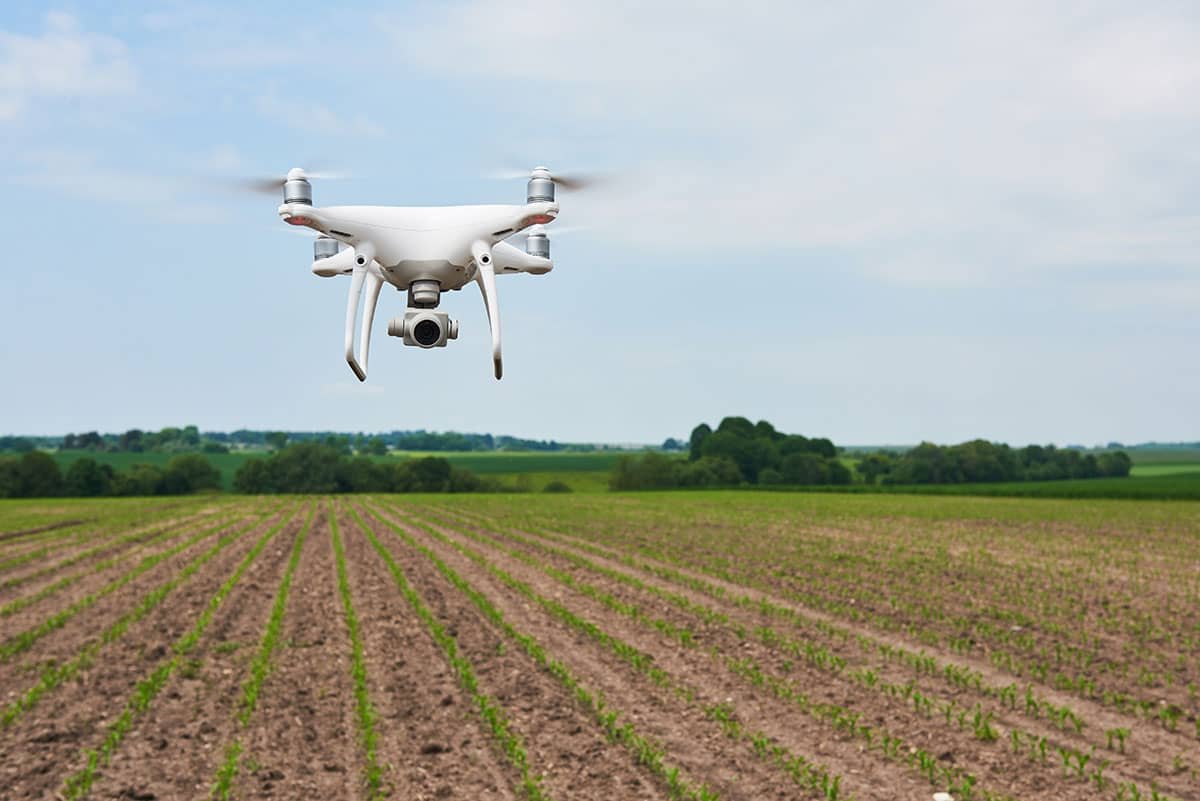
Drones for agriculture are being used to map land, monitor crops, and deliver supplies. There are many benefits to using drones in agriculture. They are cost-effective, accurate, and efficient.
Drones are being used more and more in agriculture because they can help to improve crop yields and monitor crops. They can also be used to monitor weather and climate, identify pests and diseases, and collect data about the crops. Drones can also be used to spray pesticides or fertilizers.
What are drones and how are they used in agriculture?
PNDStore is reader-supported. When you buy through links on our site, we may earn an affiliate commission. Learn more
Drones have been in use for warfare, mapping, surveying and photography since the 1960s. With advances in technology, drones are becoming more common in civilian applications such as filmmaking, agriculture and inspection. There are various types of drones including those used for recreational purposes such as recreational flying, aerial photography and videography.
Drones are unmanned aerial vehicles that can be controlled using a remote control or through the software on a computer. They come in a variety of shapes and sizes and can be used for a variety of purposes.
The drones industry is booming, with more and more people looking to buy and use drones for recreational and professional purposes. There is no doubt that drones have transformed the agricultural industry. These unmanned aerial vehicles (UAVs) are used for a variety of purposes. In addition to their widespread use in agriculture, drones have also been used in other industries, such as law enforcement and filmmaking.
Drones have become increasingly popular in recent years for a variety of reasons, including their relatively low cost, their ability to fly long distances without having to land, and their potential to improve agricultural production. There are many benefits to using drones in agriculture. They are cost-effective, accurate, and efficient.
Drones are used in agriculture in order to see the fields from above. This allows farmers to know when they need to plant more crops or when they have to water the crops. This also allows them to see if they have pests that need to be removed. Drones can also be used to monitor the crops and make sure they are growing well. In order to use drones in agriculture, farmers need to get permission from the government. This is because drones are used to gather data on farms, which is an important part of the agricultural industry. However, they are not allowed to fly over certain areas, like people’s homes.
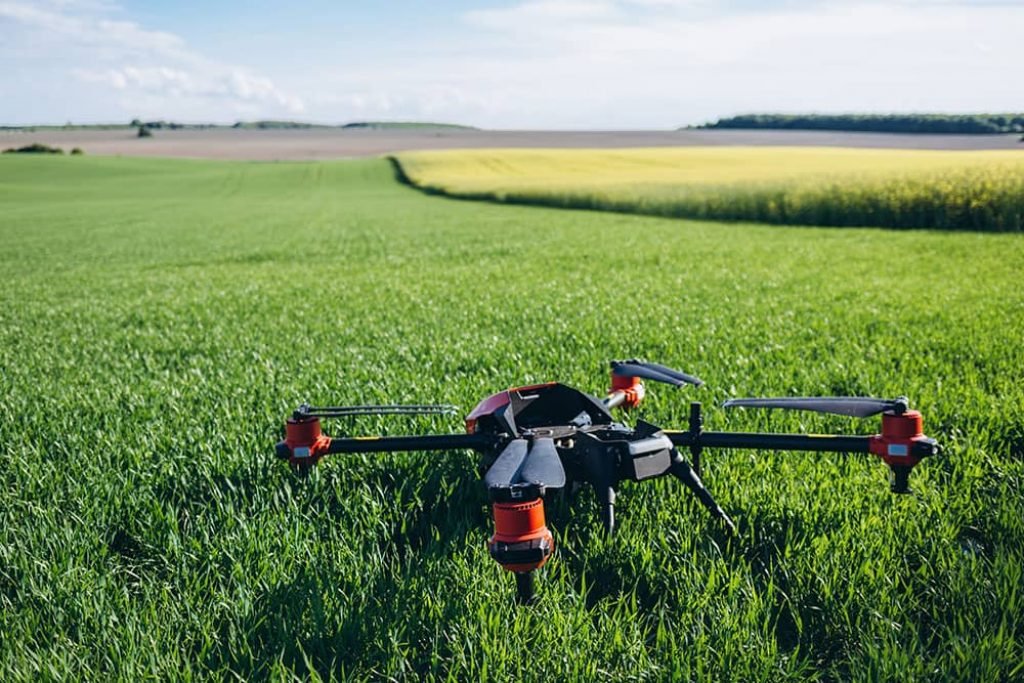
What features should you look for in drones for agriculture?
The best drones for agriculture are those with high-quality cameras and sensors that allow the user to get a clear view of the field. They should also have good battery life, fast response time, and easy-to-use controls. The best drones for agriculture are those that are able to get a clear view of the field and fly at high altitudes. They should also have a reliable and long-lasting battery, fast response time, and easy-to-use controls.
There are many different types of drones available on the market. Each type has its own set of specific features that make it better for specific applications. It is important to consider the features of the drone you are interested in and what you will use it for before making a purchase. The following is a list of the most important features of a drone, make sure to consider these features when making your purchase:
- Flight time: The flight time of a drone is measured in minutes. It is important to consider the flight time of a drone before purchasing it so that it will be able to reach your desired destination.
- Camera quality: This is a very important feature that determines how good your drone’s footage will be. It is important to consider this feature before purchasing a drone so that you will be able to capture high-quality footage.
- GPS tracking: This is a very important feature as it makes it easier to locate your drone in the air. This is a great feature for drone operators who are new to the field.
- Transmitter range: For many people, the thought of using a drone to take pictures or videos from a great height is thrilling. However, before you can start flying your drone, you need to be sure that your transmitter will cover the necessary range. Drones with longer transmitter ranges are more likely to cause interference and damage to other electronic devices, including cellular phones and radios. As drone use continues to grow, it is important that operators take precautions to protect themselves and others from potential harm.
- Return home: If you are too far away from your drone, it will automatically fly back to your controller. This is a great feature to have as it prevents you from having to constantly monitor your drone’s location.
- Battery life: Drone batteries are one of the most important considerations for those considering purchasing a drone. Knowing how long the battery will last is essential to making an informed decision.
- Picture processing: Drones can be used to capture images and videos from a variety of different angles. This means that they can be used to take pictures of something that is difficult to access or photograph, but they are also great for taking a whole lot of pictures in a very short amount of time. It can be difficult to find a good way to edit all those images, and that’s where drones make a really unique and powerful tool.
- Software: Commercial drones are becoming increasingly sophisticated, with software that can control the aircraft even while it is flying. These programs make drones more than just unmanned aerial vehicles (UAVs). They have become controllable platforms for a variety of applications, such as surveying land, inspecting infrastructure, and performing search and rescue tasks.
- Rotor or fixed-wing: Drones are becoming more popular for a variety of reasons, one of which is the fact that they can be flown with either a rotary or fixed-wing propeller. Rotary drones are typically smaller and lighter, but they have the advantage of being able to fly in tighter spaces than fixed-wing drones. Fixed-wing drones are typically larger and heavier, but they can fly for longer periods of time with less need for refueling.
How drones help farmers
Drones for agriculture offer a novel way to assess crop health and map fields in real-time. They can also deliver fertilizers and other tools directly to plants, reducing the need for humans to enter the field. However, there are some challenges that need to be addressed before drones can be widely adopted for this purpose. For example, unmanned aerial vehicles (UAVs) must be able to navigate safely in close proximity to people and other obstacles, and they must be able to carry out tasks reliably in challenging weather conditions.
Drones offer farmers a way to conduct aerial photography and mapping, monitor crops, and collect data on soil health. They can also help farmers manage their land more effectively by providing real-time information about crop conditions.
Types of drones used in agriculture
According to Global Market Insights (GMI), by 2024 is estimated that the farming automation market size will surpass one billion USD.
Multi-Rotor Drones for agriculture
Drones have revolutionized the agricultural industry in recent years, making it easier and more efficient to conduct tasks such as mapping land usage and crop yields. However, there are still many obstacles to overcome when it comes to drone use in agriculture, including the lack of reliable aerial data and a limited number of applications.
The Multi-Rotor Drone for Agriculture was designed to address these issues. Multi-rotor drones are becoming increasingly popular for agricultural applications due to their ability to hover and survey large areas quickly and easily. This technology has the potential to improve crop yields, monitor plant health, and survey land for potential pests or issues.
Fixed Wing Drones for agriculture
Flying a drone for agricultural purposes is becoming increasingly popular due to its convenience and accuracy. Fixed-wing drones are perfect for this type of work as they can stay in one spot for extended periods of time, allowing farmers to take pictures and videos of crops from a safe distance.
Fixed-wing drones are perfect for agricultural applications as they can be flown in tight spaces and over large distances. They can collect data such as temperature, humidity, and rainfall which can help farmers make better decisions about their crops.
DJI Matrice 300 RTK

DJI’s latest drone platform, the Matrice 300 RTK, is intended for commercial-grade use, basically taking inspiration from recent aviation systems. With over 55 minutes of flight time, AI capabilities, 6 Directional Sensing & Positioning, and several updated functionalities, the device set a new standard by combining intelligence and high-performance with unrivaled reliability.
Dji Matrice 300 RTK is a high-end aerial mapping drone that has been designed by DJI. It features an advanced 3-axis gimbal and a 12MP sensor for precision mapping. The drone can map up to 4,000 square meters per hour, which makes it one of the most efficient aerial mapping drones on the market.
It is a versatile platform that can be used for both commercial and recreational purposes. Matrice 300 RTK has an advanced flight control system and an autopilot that make it easy to operate.
Features:
- 55 min Max Flight Time
- 15km 1080p map transmission
- 6 Directional Sensing and Positioning
- Primary Flight Display
- Hot-swappable Battery
- UAV Health Management System
- IP45 Rating
- -20°C to 50°C operating temperature
DJI Agras MG-1S
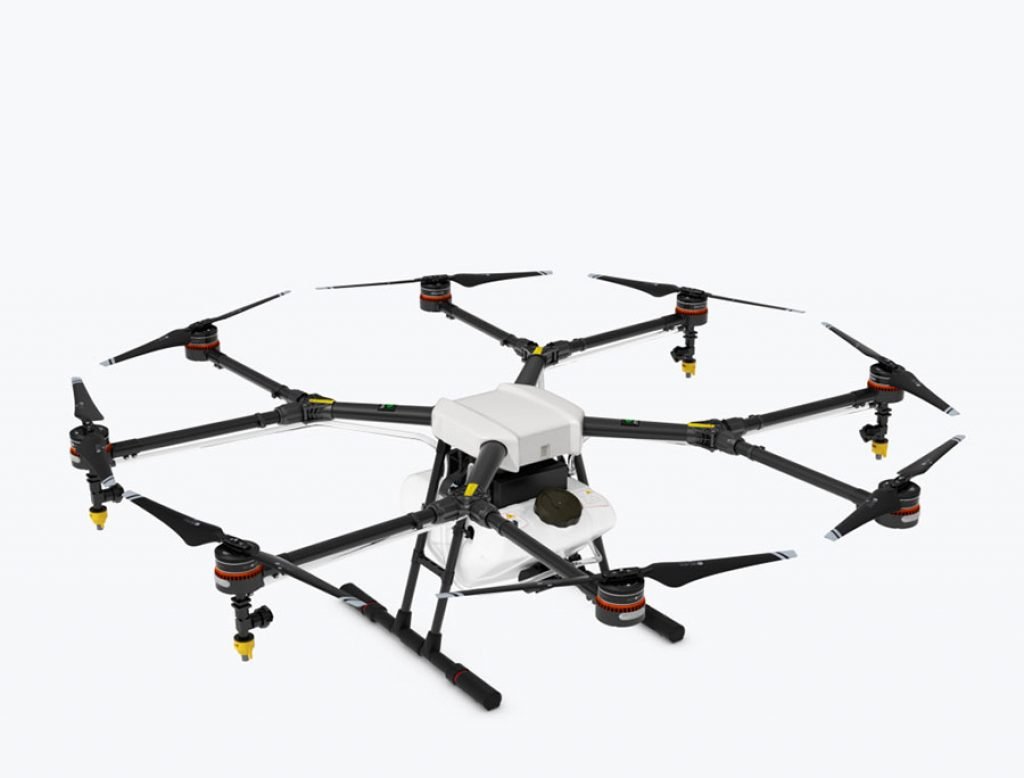
DJI drones are some of the most popular in the world and for good reason. They’re easy to use, have great cameras, and are generally reliable. The DJI Agras MG-1S is one of their newer models. It’s a drone that’s specifically designed for agricultural purposes. It has a range of up to 4km, can fly at up to 60mph, and has a payload of up to 2kg.
The drone has a camera that can capture high-resolution images, giving the user an accurate view of the field. It also has a GPS system that tracks the user’s movements, allowing them to make precise adjustments to their shots.
The MG-1S controller has a 5.5-inch 1080p display that is clear even beneath intense ambient light, and supplies a controller that has built-in operation planning functions. The battery of the controller supports a 5-hour duration, enabling users to use it outdoors considerably.
DJI’s Agras MG-1S is a great drone for agricultural purposes. It has a long flight time, stable flight, and accurate pictures.
Features:
- Max Takeoff Weight 23.8 kg
- Operating Frequency 2.400 GHz to 2.483 GHz
- Operating Temperature Range -10 ℃ to 40 ℃
- Flight time: 22 min
- A3 Flight Controller
- Radar Sensing System
- Controller with 5.5 inch/1080p display
- 7-10 acres per hour
Sensefly eBee SQ drone for agriculture
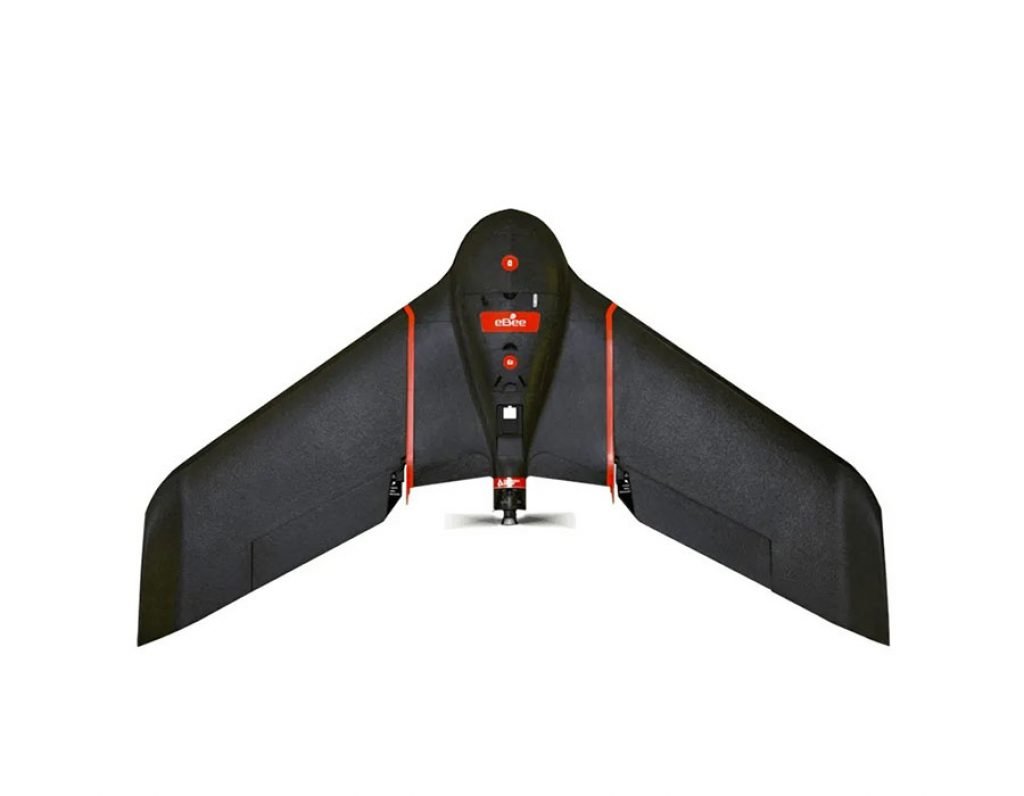
With its small size and lightweight design, the Sensefly eBee SQ drone is perfect for agricultural applications. The drone can be used to monitor crops in real-time and make improvements to farming practices. The drone is also equipped with a camera that can capture high-quality images and videos.
Additionally, senseFly professional drones are the most widely used aerial imaging tools in the world. Used by tens of thousands of remote experts and agricultural professionals around the globe, these systems are characterized by their sturdy construction, safe operation, professional-grade software, and application-specific cameras.
Sensefly’s eBee SQ drone is designed to meet the needs of small-scale farmers and agricultural professionals. It’s easy to use, affordable and can be deployed quickly and easily.
It is easy to operate and can fly in a large area. It is also very durable and doesn’t need a lot of maintenance. This drone is also perfect for farmers because it is a very efficient drone. It can fly a lot further than other drones and it is more energy-efficient.
Features:
- Parrot Sequoia+ Multispectral Sensor
- Available in low value-packed price
- Compatible with existing FMIs
- Can take on multi-flight projects
- Compatible with your existing FMIS
- Built-in flight data manager
- Connects drone to the online cloud solution
AgEagle RX-48 Drone for Agriculture
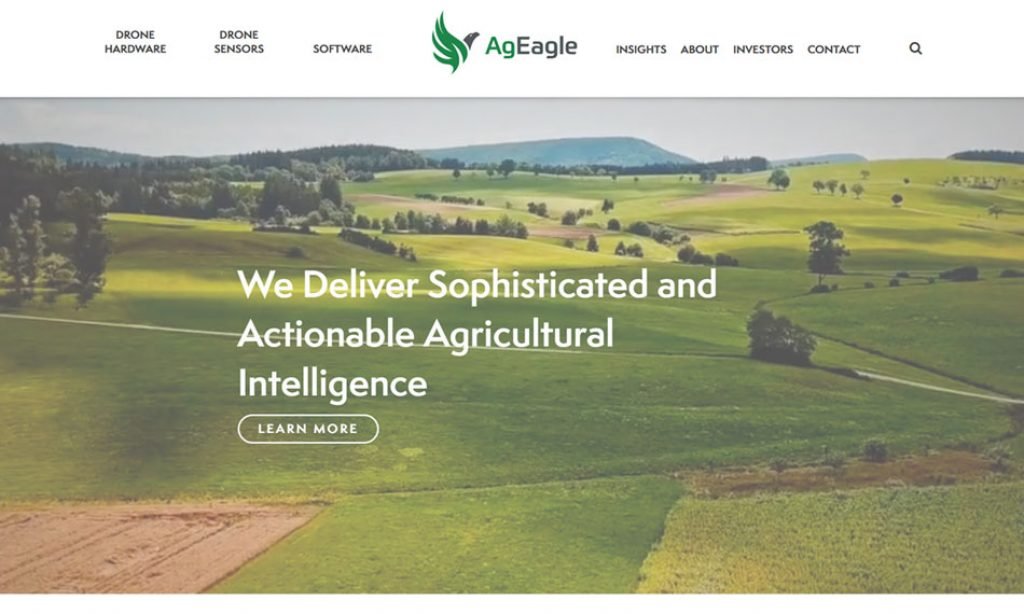
The AgEagle RX-48 drone is a precision aerial tool that can be used to map and monitor crops, soil health, and other agricultural activities. With its advanced imaging capabilities, the drone can provide farmers with valuable information about their crops and soil health in real-time.
Smaller than the RX-60 but no less rugged, the hand-launched RX-48 weighs in at only four pounds and is composed of highly durable polypropylene material covered with a composite layer consisting of layers of extruded polypropylene and carbon fiber rods incorporated in the fuselage and wing.
The AgEagle RX-48 Drone is a quadcopter that offers a lot of great features to help farmers with their work. It has an HD camera that has a great range of views and is able to capture amazing aerial footage. It also has an auto takeoff feature that allows you to take off and land without needing to be in the field. This drone also has a night vision feature that allows you to take night shots of the land that you are working on.
The RX-48 was designed for low- to medium-density crops that cover a band of at least 250 acres per hectare. It also has the capability to affix active infrared (IR) shutter sensors that are suitable for sending on the nutrients and chemicals of a precise application tractor. The data collected from the drone can be used to improve farming practices and make better decisions about crop production.
Features:
- Accurate prescription maps
- Coverage 250-300 acres
- Fly up to 50 Minutes
- Compact and portable
- Durable construction
- High-performance sensors
- Fully autonomous flight
- Weighs less than 2kg
DJI Phantom 4 Pro

The DJI Phantom 4 Pro Plus quadcopter is perfect for agriculture use due to its GPS capabilities and the ability to simultaneously track multiple objects. This drone is capable of flying at a maximum speed of 45mph and can reach a height of up to 4,000 feet.
It’s powerful enough to capture high-quality footage and photos of your crops, but easy enough to operate that anyone can use it. Best of all, it doesn’t require a lot of space – the Phantom 4 Pro Plus can even be flown indoors. It also has a wide range of aerial capabilities, making it perfect for taking pictures and videos of crops and farms.
It has a 4k camera, a range of up to 4.3 miles, and can fly up to 33 minutes without stopping. It’s also incredibly easy to use, making it a great choice for beginner drone operators as well.
Features:
- Easy, fully automatic operation
- Quality resolution for video and photos
- Long-lasting battery life
- Strong and lightweight construction
- Survey area per flight 300ac
- Flight time up to 45mins
Delair UX11 drone

The Delair UX11 Drone for Agriculture is another great drone from our list of top drones for agriculture, designed to improve the efficiency of agricultural tasks, such as crop surveying and mapping. It has a camera that can capture high-resolution images and videos. The drone is also equipped with sensors that can measure various aspects of the land, such as soil moisture, vegetation density, and temperature.
The images can then be used to create crop maps and monitor the health of crops. Delair Delair offers a variety of professional options and lets you rent a drone model of your choosing to spend less. At UX 11 Delair, you can benefit from an entirely new method of drone flying.
The Delair UX11 is a drone designed specifically for agriculture. It has a payload capacity of up to 2kg. The drone also has a wide range of sensors, including an infrared camera, which allows it to detect plants and animals in the field. The Delair Company offers the Delair drone line at an estimated cost of $13,000.
Features:
- Up to 4ml range
- Map up to 300 ac
- Fast and easy setup
- Accurate and automatic landing
- Fully automatic flight
- Easy flight management
Popular drones for agriculture FAQs
What is an agriculture Drone?
Agriculture drones are unmanned aerial vehicles used for crop monitoring and management. They can take pictures and videos of crops to help farmers make informed decisions about which crops to plant when to plant them, and how much water to use. They can also be used to monitor pests and diseases.
Why are drones important for farming?
Drones for agriculture are an important tool for farmers to help them increase crop production. They can be used to monitor fields and help detect field problems. They can also help farmers with planting and harvesting. Drones can help farmers with their work and make it more efficient. They can also help with crop rotation and pest management. However, drones aren’t the only tool that farmers can use to help increase crop production. Other tools include improved irrigation and better soil analysis.
Drones are important for farming because they allow farmers to take pictures and videos of their crops in order to identify and diagnose problems. This information can then be used to fix the problem before it becomes too big or to harvest crops earlier than usual so that they can be stored for later. Drones also allow farmers to map out their fields and find new areas that could be planted with crops.
Drones have become an increasingly important tool in modern farming. Not only do they allow farmers to conduct aerial observations and mapping that couldn’t be done before, but they can also help with the collection of data on weather patterns and other environmental factors. Drones are even being used in conjunction with GPS devices to assist in planting decisions. They’re a versatile tool for crop monitoring and can provide farmers with information that wasn’t previously possible or affordable.
How much do farming UAVs cost?
In recent years, the use of unmanned aerial vehicles (UAVs) in agriculture has seen a rise in popularity. The cost of these machines is not insignificant, though, and farmers need to weigh the pros and cons before making a purchase.
For farmers who are looking to get a drone into the air to survey their crops, map land or take pictures of their livestock, there are a number of options and prices to consider. According to the Bureau of Labor Statistics (BLS), the average wage for a farm worker was $20.59 per hour in 2016. This means that the cost of a drone, including the pilot and various equipment, could amount to upwards of $3,000.
UAVs typically cost about $10,000 to $15,000 to purchase and operate. The price includes the drone, cameras, and other hardware required for flying. However, the price can vary depending on the model and features of the drone. UAVs can also be rented from companies that offer flight services.
How many farmers use UAVs?
Since UAVs can be used for a variety of purposes, it is no surprise that farmers are beginning to use them more and more. UAVs can be used to survey land, check crops, and track animal movements. In addition, they can be used to assess the potential for new crops or livestock grazing areas. The benefits of using UAVs for farming outweigh the costs, making them an increasingly popular tool for farmers.
UAVs (unmanned aerial vehicles) have become an increasingly popular tool for farmers to use in crop scouting and mapping, as well as for other agricultural purposes. According to the National Agricultural Statistics Service, there were 1,406 farmers using UAVs in 2013. This number was projected to grow over the next several years, reaching 2,552 farmers by 2018. They also allow farmers to extend their operations into areas that are difficult or impossible to access.
How many acres is a UAV capable of covering?
In recent years, unmanned aerial vehicles or UAVs have become more common due to their ability to cover large areas quickly and efficiently. However, not many people know just how large an area a typical UAV can cover. According to the Federal Aviation Administration, a typical UAV is able to fly at a maximum altitude of 400 feet and travel a distance of up to 100 miles. There are many different sizes and shapes of UAVs, but the largest ones can typically cover an area of about 2,000 square feet.
In some cases, a single drone can cover an area much larger than what a manned aircraft can. This is especially true for small drones that are not large enough to carry heavy payloads or to travel over long distances.
The density of agricultural activity also affects coverage. For example, a UAV flying over a cornfield will have much different coverage than one flying over a soybean field. There are factors like wind direction and speed that also affect coverage.






